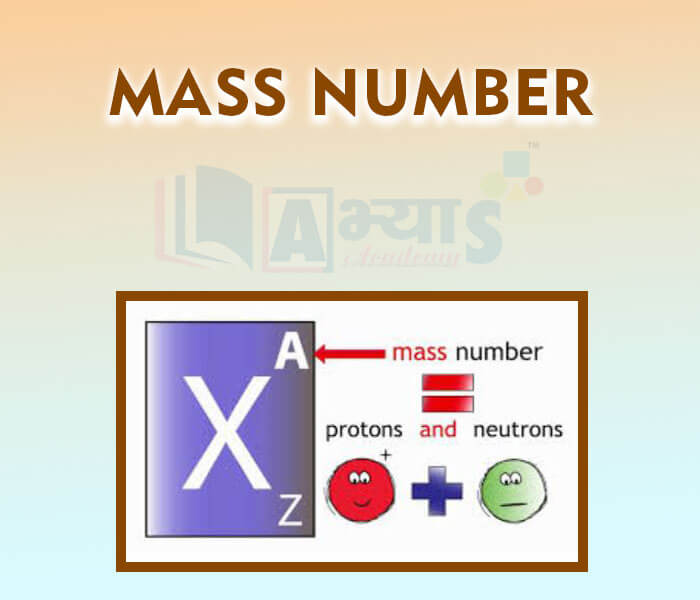Mass Number










Mass Number
Mass Number: It is defined as the sum of number of protons and neutrons in the nucleus of an atom. Protons and neutrons together are called as nucleons. Mass number is denoted by A. Mass number (A) = Number of protons + number of neutrons. Eg: He, Li, At. mass = 4 and 7 for He and Li respectively.
Number of neutrons = Mass number - atomic number
Atomic number = Number of protonsMass number is written as a superscript towards the left of the symbol. In the notation for an atom, the atomic number, mass and symbol of the element are to be written as:
Here, the mass number of helium, lithium, sodium are 1, 7, 23 respectively.
Which of the following statement / statements are correct : (a) Mass number is denoted by M. (b) Number of neutrons = Mass number - atomic number (c) Mass number of lithium is 7. | |||
| Right Option : B | |||
| View Explanation | |||
Mass number of an atom is equal to the sum of atomic number and number of __________ | |||
| Right Option : D | |||
| View Explanation | |||
If atomic number and mass number of an element are 11 and 23 respectively, What will be the number of neutrons present in it? | |||
| Right Option : B | |||
| View Explanation | |||
Students / Parents Reviews [10]
Abhyas is a complete education Institute. Here extreme care is taken by teacher with the help of regular exam. Extra classes also conducted by the institute, if the student is weak.

Om Umang
10thMy experience with Abhyas is very good. I have learnt many things here like vedic maths and reasoning also. Teachers here first take our doubts and then there are assignments to verify our weak points.

Shivam Rana
7thIt has a great methodology. Students here can get analysis to their test quickly.We can learn easily through PPTs and the testing methods are good. We know that where we have to practice

Barkha Arora
10thAbout Abhyas metholodology the teachers are very nice and hardworking toward students.The Centre Head Mrs Anu Sethi is also a brilliant teacher.Abhyas has taught me how to overcome problems and has always taken my doubts and suppoeted me.

Shreya Shrivastava
8thIt was good as the experience because as we had come here we had been improved in a such envirnment created here.Extra is taught which is beneficial for future.

Eshan Arora
8thMy experience was very good with Abhyas academy. I am studying here from 6th class and I am satisfied by its results in my life. I improved a lot here ahead of school syllabus.

Ayan Ghosh
8thOne of the best institutes to develope a child interest in studies.Provides SST and English knowledge also unlike other institutes. Teachers are co operative and friendly online tests andPPT develope practical knowledge also.

Aman Kumar Shrivastava
10thA marvelous experience with Abhyas. I am glad to share that my ward has achieved more than enough at the Ambala ABHYAS centre. Years have passed on and more and more he has gained. May the centre flourish and develop day by day by the grace of God.

Archit Segal
7thIt was a good experience with Abhyas Academy. I even faced problems in starting but slowly and steadily overcomed. Especially reasoning classes helped me a lot.

Cheshta
10thAbhyas Methodology is very good. It is based on according to student and each child manages accordingly to its properly. Methodology has improved the abilities of students to shine them in future.
